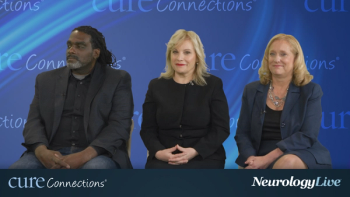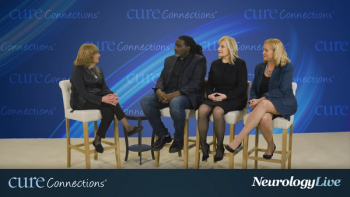
Treatment Advances in NMOSD
Dr Brian G. Weinshenker envisions the future management of neuromyelitis optica spectrum disorders based on his involvement in research programs and treatment advances occurring in neurology.
Episodes in this series

June Halper, MSN, APN-C, MSCN, FAAN: Dr Weinshenker, you’ve lived through the past decade and a half, watching major changes in a disease that was unknown. Where do you see the next several years, and how do you feel about the work you’ve done and the wonderful accomplishments you’ve overseen?
Brian Weinshenker, MD: When I got into neuromyelitis optica and became interested in it, I didn’t foresee the kinds of advances that would occur. I was very fortunate to catch the interest of Dr [Vanda] Lennon, who is a brilliant, clinically focused neuroimmunologist. She was particularly struck because she always felt that multiple sclerosis wasn’t a single condition. We diagnosed multiple sclerosis when patients had multiple episodes over time, and I thought, “That’s not going to be a satisfactory way to define this disease.” That said, we can’t diagnose MS [multiple sclerosis] in this way. We need to consider other things. Dr Lennon was able to discover, in some of my patients, this biomarker, which turned out to be very specific. It heralded a start of recognizing how MS is played heterogeneous.
There are other antibody markers that identify other conditions, like MOG [myelin oligodendrocyte glycoprotein]–associated disease, which can look very much like this neuromyelitis optica. That’s going to be a big part of the future, further dissecting multiple sclerosis, looking for more specific antibody markers, and recognizing small differences in severity. This may be a clue that we’re dealing with a different condition. We have to consolidate the gains that we’ve achieved with these new therapies. They’re going to be very helpful, obviously looking into the future. This has been another of the major focuses of the Guthy-Jackson vision. Is it that all these drugs still pose some risk of infection? Now that we know what the specific target is in neuromyelitis optica and we have more biological tools, it would be nice in a target-specific or antigen-specific way to suppress this disease.
There has been a focus on developing what we call tolerance by getting the immune system to accept, say, this protein, aquaporin 4, which we know is the target in neuromyelitis optica. How can we get the immune system to accept it and ignore it, instead of attack it? Without going through all the details, various ways of manipulating the immune system may offer some advantages. In the long run, we hope that this more specific treatment will be even more effective or perhaps safer. The more targeted we can make our treatments, the safer they seem to be. That will be part of the vision for the future.
June Halper, MSN, APN-C, MSCN, FAAN: This was a wonderful opportunity to meet all of you and work together on this exciting broadcast. It’s very gratifying that we’ve lived through an era of such change. I’d like to thank our viewers for joining us. Neurology Live® Cure Connections® is 1 of a series of programs that I’ve been honored to be involved in.
Thank you for watching Neurology Live® Cure Connections®. If you enjoyed this program, please subscribe to our e-newsletter to receive upcoming programs and other great content in your in-box.
Transcript edited for clarity.
Newsletter
Keep your finger on the pulse of neurology—subscribe to NeurologyLive for expert interviews, new data, and breakthrough treatment updates.












































